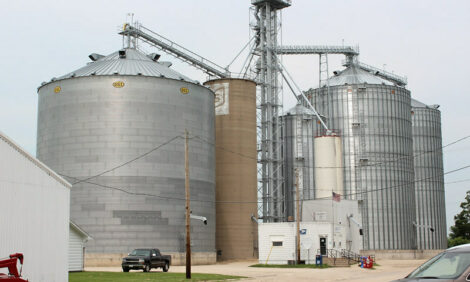



Urgent Action Required on Falling Food Productivity
US - In advance of the G8 summit, Elanco president Jeff Simmons warns global leaders that food productivity is not keeping pace with food demand now and in the immediate future.Food inflation combined with inadequate gains in productivity are clear indicators that our ability to feed a rapidly growing population is at serious risk without swift action.
During a panel discussion with senior global leaders at the Chicago Council on Global Affairs Symposium "Advancing Food and Nutrition Security at the G8 Summit" in Washington, Mr Simmons urged leaders to take action now to address the challenge of developing more efficient food production systems and pressed for policy alternatives that provide long-term, sustainable solutions to hunger, food inflation and food availability.
"Currently, nearly 1 billion people cannot afford 1,880 calories a day and almost 3 billion live on less than $2 a day. These observations show that the time is now to make decisions that support the world's growing food needs," said Mr Simmons. "We're already facing significant challenges to our food system. They must be addressed today."
According to the 2011 World Livestock Report issued by the UN Food and Agriculture Organization (FAO), by the end of the decade, the world will need to produce 20 per cent more meat and poultry than we do today – with two-thirds of the need coming from developing countries. By 2050, demand is expected to grow by about 75 per cent. Simmons used new predictions for eggs and dairy to illustrate the impact such demands could have on our food system.
Egg Productivity Declining
Challenge: Eggs are one of the most basic, affordable protein sources that people around the world depend upon. But, in recent years, production has been declining by one egg per chicken per year. If continued, this trend will require three times more hens (17.7 billion) to deliver the estimated egg needs required by families in 2050.
Solution: Adopting new and existing technologies and practices that optimize animal welfare, health, and productivity can restore productivity to necessary growth levels – helping hens produce a modest 1.5 eggs more per year. Such a change in productivity would require just 10.4 billion hens to meet egg demand in 2050 – or approximately 7 billion fewer birds.
Per capita milk availability is declining despite 2X production growth
Challenge: Global milk production has almost doubled in the past 50 years. Yet, fewer people have access to milk today because populations are growing faster than production gains. In 1950, each person had access to 279g of milk per day. By 2010, milk per capita had dropped 14 per cent to 239g per day.
Solutions: The adoption of existing and emerging innovation to dairy production can help accelerate milk productivity to align population and demand growth. For example, China is targeting a near doubling of per capita milk availability to 156g per person per day by the end of the decade. Without significant improvements in productivity this will require 15 million additional cows, and a doubling of the feed and water resources currently used.
"Given the right policy environment and access to appropriate technologies, I believe global agriculture can meet these productivity challenges," Mr Simmons said. "If you take the United States for example, in the past 60 years agricultural output has increased 250 per cent while inputs have remained nearly stable."
Making Progress a Priority
Mr Simmons urged leaders to take action now and emphasized three clear priorities for overcoming barriers in inspiring progress and enabling people's access to safe, affordable food today:
- Innovation: It is important to invest in innovative technologies that drive efficient food productivity to meet the growing needs of a rapidly expanding population. Innovation must start with consistent, science-based regulatory processes and public and private support is needed to assure that innovation has the ability to enter the market.
- Choice: Every country, family and mother deserves the right to make their own choices about the food they feed their families and not live by the choices of others – particularly when those choices impact their children's food. Whether it's a Chinese citizen that wants to add more dairy to the diet as they grow in affluence, or the American consumer that prefers a luxury option, we must not make decisions that limit access to safe protein that meets consumers' needs.
- Food Trade: As the demand for meat, milk and eggs grows, the challenge is recognizing the impact a global market has on developing counties. Barriers to trade impact availability, inflation, and the price of food. Leaders should consider the global impact of policies outside their borders.
The panel, "Agricultural Innovation: Getting to Scale" also included, Jack Sinclair, Walmart; Hugh Grant, Monsanto; Sam Dryden, Bill & Melinda Gates Foundation; Dyborn Chibonga, National Association of Smallholder Farmers of Malawi; and Janet Chigabatia, Savanna Farmers Market Company.
To join the dialogue about how to sustainably feed a growing global population, click here. A copy of Jeff Simmons' white paper, Making Safe, Affordable, Abundant Food a Global Reality is also available on the site.








